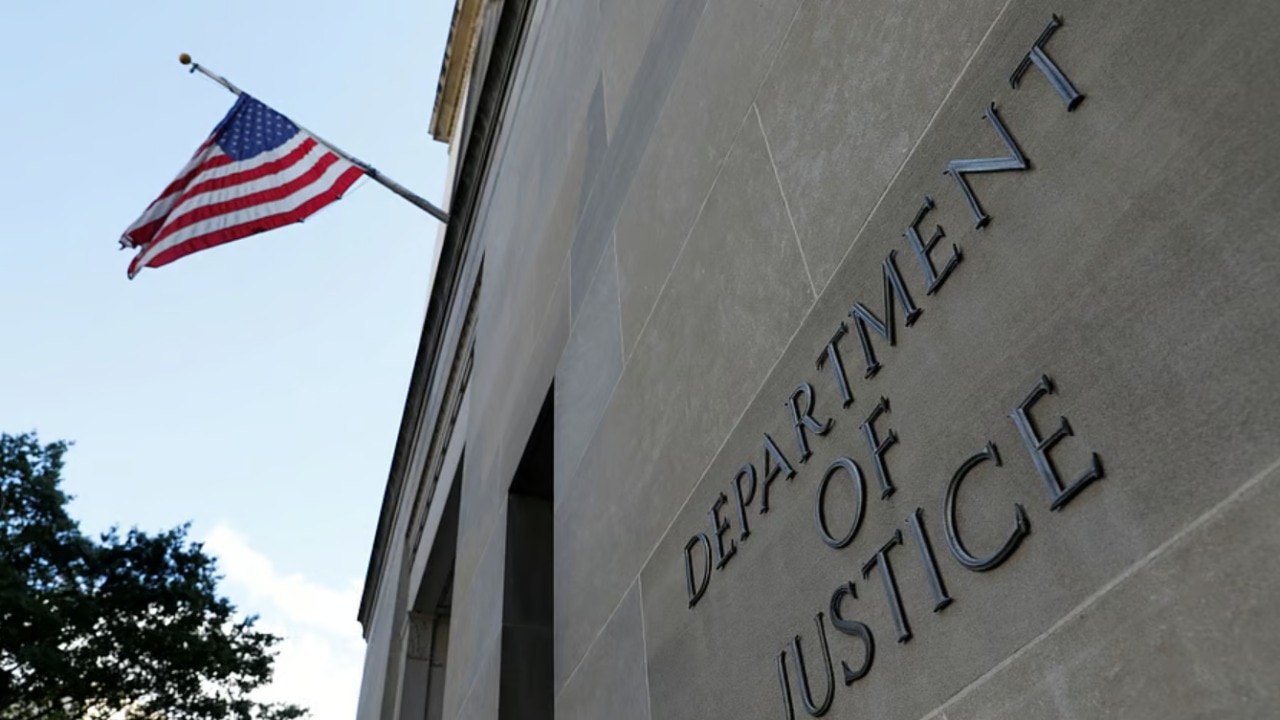Pakistani man jailed for 40 years in US for smuggling Iranian weapons to Houthis – India Today

Report on Illicit Arms Trafficking and its Implications for Sustainable Development Goals
Case Summary
A Pakistani national, Muhammad Pahlawan, has been sentenced to a 40-year prison term in the United States following a conviction in June for the trafficking of advanced conventional weaponry. The case highlights a significant disruption of an illicit arms supply chain that directly contravenes international efforts to achieve global peace and security, as outlined in the Sustainable Development Goals (SDGs).
Details of the Interdiction Operation
On January 11, 2024, United States Central Command naval forces interdicted an unflagged vessel in the Arabian Sea. The operation, conducted by personnel from the USS LEWIS B PULLER, including U.S. Navy SEALs and Coast Guard members, resulted in the seizure of Iranian-made advanced weaponry. The seized cargo included:
- Ballistic missile components
- Anti-ship cruise missile components
- A warhead
This weaponry is consistent with that used by Houthi forces to attack international maritime vessels, disrupting global trade and threatening regional stability. The interdiction operation tragically resulted in the loss of two U.S. Navy SEALs, Christopher Chambers and Nathan Gage Ingram.
Judicial Outcome and Charges
A federal jury found Muhammad Pahlawan guilty of multiple charges related to terrorism and weapons proliferation. His 40-year sentence reflects the severity of these offenses, which undermine the foundational principles of peace and justice. The specific convictions were for:
- Conspiring to provide material support and resources to terrorists.
- Providing material support to Iran’s weapons of mass destruction (WMD) programme.
- Providing material support to the Islamic Revolutionary Guard Corps’ (IRGC) WMD programme.
- Conspiring and transporting explosive devices to Houthi forces.
Implications for Sustainable Development Goals (SDGs)
This case of illicit arms trafficking represents a direct challenge to the international community’s 2030 Agenda for Sustainable Development, particularly impacting several key goals.
SDG 16: Peace, Justice and Strong Institutions
The smuggling operation is a severe violation of SDG 16, which aims to promote peaceful and inclusive societies. The actions of Pahlawan and his co-conspirators directly contradict several targets within this goal:
- Target 16.1: The provision of advanced weaponry to conflict zones significantly increases violence and related death rates.
- Target 16.4: The operation is a clear instance of illicit arms flows, which this target aims to significantly reduce by 2030.
- Target 16.a: The conviction and sentencing demonstrate a commitment to strengthening national institutions to combat terrorism and crime, but the existence of such trafficking networks highlights ongoing vulnerabilities.
SDG 8: Decent Work and Economic Growth
The attacks on merchant and military ships in the Red Sea and Gulf of Aden, facilitated by such weapon shipments, threaten global maritime trade routes. This instability jeopardizes economic growth, disrupts global supply chains, and endangers the livelihoods of seafarers, thereby undermining progress toward SDG 8.
SDG 17: Partnerships for the Goals
The successful interdiction by U.S. naval forces exemplifies the importance of international cooperation (Target 17.16) in addressing transnational threats. Such partnerships are essential for enforcing international law and maintaining the security required to achieve all other SDGs.
Conclusion
The sentencing of Muhammad Pahlawan is a significant step in holding individuals accountable for actions that fuel conflict and instability. The case serves as a critical reminder that illicit arms trafficking is not merely a criminal issue but a fundamental barrier to achieving a sustainable, peaceful, and prosperous future as envisioned by the Sustainable Development Goals. Continued international vigilance and cooperation are imperative to dismantle these networks and uphold the principles of global peace and justice.
Analysis of Sustainable Development Goals in the Article
1. Which SDGs are addressed or connected to the issues highlighted in the article?
The primary Sustainable Development Goal (SDG) addressed in the article is SDG 16: Peace, Justice and Strong Institutions. The article’s content is directly related to this goal’s aim to “promote peaceful and inclusive societies for sustainable development, provide access to justice for all and build effective, accountable and inclusive institutions at all levels.”
- Peace and Security: The article details the smuggling of “advanced conventional weaponry,” including “ballistic missile components” and “anti-ship cruise missile components,” to Houthi rebels. This act of arms trafficking directly undermines peace and security in the region (Red Sea and Gulf of Aden), contributing to violent conflict.
- Justice and Rule of Law: The core of the article is the legal consequence of these actions. The conviction and sentencing of Muhammad Pahlawan to “40 years in prison” by a US federal jury demonstrates the functioning of justice systems to combat international crime and terrorism.
- Combating Organized Crime: The smuggling operation described, involving coordination between Pahlawan and “two Iranian brothers, Shahab Mirkazei and Yunus Mirkazei, affiliated to Iran’s Islamic Revolutionary Guard Corps (IRGC),” is a clear example of transnational organized crime.
2. What specific targets under those SDGs can be identified based on the article’s content?
Several specific targets under SDG 16 are relevant to the events described in the article:
-
Target 16.1: Significantly reduce all forms of violence and related death rates everywhere.
- The article highlights the direct consequences of violence, noting that “Two Navy SEALs — Christopher Chambers and Nathan Gage Ingram — lost their lives during the interdiction.” Furthermore, the purpose of smuggling weapons was to support Houthi rebel attacks “against merchant ships and US military ships,” which is a direct form of violence. The interdiction operation aimed to prevent this future violence.
-
Target 16.4: By 2030, significantly reduce illicit financial and arms flows, strengthen the recovery and return of stolen assets and combat all forms of organized crime.
- This target is central to the article. The entire incident revolves around the interdiction of an illicit arms flow. The US Navy forces “located and seized Iranian-made advanced conventional weaponry,” which is a direct action against illicit arms trafficking. The article describes Pahlawan’s role in a smuggling operation, which is a form of organized crime.
-
Target 16.a: Strengthen relevant national institutions, including through international cooperation, for building capacity at all levels, in particular in developing countries, to prevent violence and combat terrorism and crime.
- The article showcases the actions of national institutions (US Central Command Navy forces, US Coast Guard, US Justice Department) working to combat terrorism and crime. The conviction of Pahlawan for “conspiring to provide material support and resources to terrorists” and “providing material support to the Islamic Revolutionary Guard Corps’ weapons of mass destruction programme” is a direct outcome of these institutions’ efforts. The operation in the Arabian Sea is an example of international action to prevent violence.
3. Are there any indicators mentioned or implied in the article that can be used to measure progress towards the identified targets?
Yes, the article contains information that can serve as direct or implied indicators for measuring progress towards the identified SDG targets:
-
For Target 16.1:
- An indicator is Indicator 16.1.2: Conflict-related deaths per 100,000 population, by sex, age and cause. The article explicitly states that “Two Navy SEALs… lost their lives during the interdiction,” providing a direct data point for this indicator.
-
For Target 16.4:
- An indicator is Indicator 16.4.2: Proportion of seized, found or surrendered arms whose illicit origin or context has been traced or established by a competent authority in line with international instruments. The article provides a clear example of this by stating the US boarding team “located and seized Iranian-made advanced conventional weaponry, including ballistic missile components, anti-ship cruise missile components, and a warhead.” The origin (Iranian-made) and context (smuggling to Houthi rebels) were established.
-
For Target 16.a:
- While not a formal UN indicator, the successful prosecution and sentencing of an individual involved in terrorism and arms trafficking serves as a qualitative indicator of the effectiveness of national justice institutions. The article’s focus on the conviction and the “40 years in prison” sentence for charges including “providing material support and resources to terrorists” demonstrates the capacity of the legal system to address such crimes.
4. Table of SDGs, Targets, and Indicators
| SDGs | Targets | Indicators Identified in the Article |
|---|---|---|
| SDG 16: Peace, Justice and Strong Institutions | 16.1: Significantly reduce all forms of violence and related death rates everywhere. | Indicator 16.1.2: The article mentions that “Two Navy SEALs… lost their lives,” which is a direct measure of conflict-related deaths. |
| SDG 16: Peace, Justice and Strong Institutions | 16.4: By 2030, significantly reduce illicit financial and arms flows… and combat all forms of organized crime. | Indicator 16.4.2: The seizure of “Iranian-made advanced conventional weaponry” by US forces is a direct instance of interdicting and tracing illicit arms flows. |
| SDG 16: Peace, Justice and Strong Institutions | 16.a: Strengthen relevant national institutions… to prevent violence and combat terrorism and crime. | Implied Indicator: The conviction and 40-year prison sentence for “providing material support and resources to terrorists” demonstrates the capacity and effectiveness of national judicial institutions in combating terrorism and organized crime. |
Source: indiatoday.in
What is Your Reaction?
 Like
0
Like
0
 Dislike
0
Dislike
0
 Love
0
Love
0
 Funny
0
Funny
0
 Angry
0
Angry
0
 Sad
0
Sad
0
 Wow
0
Wow
0



















































.jpg.webp?itok=0ZsAnae9#)

























